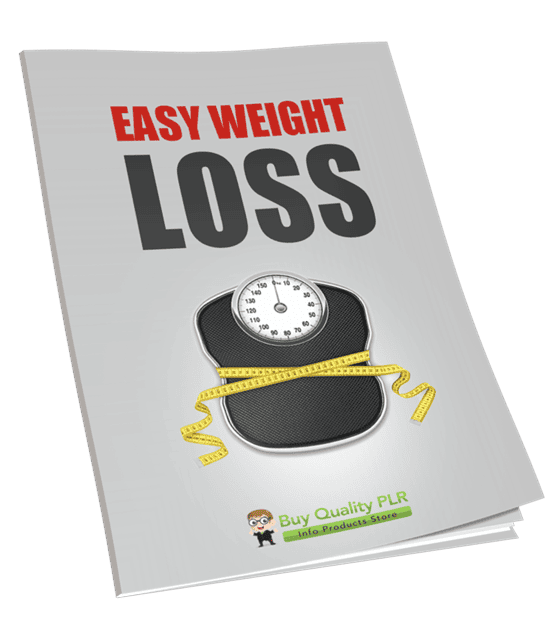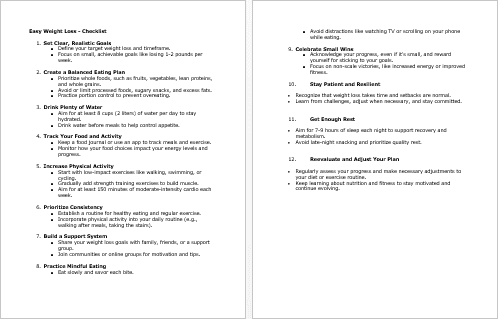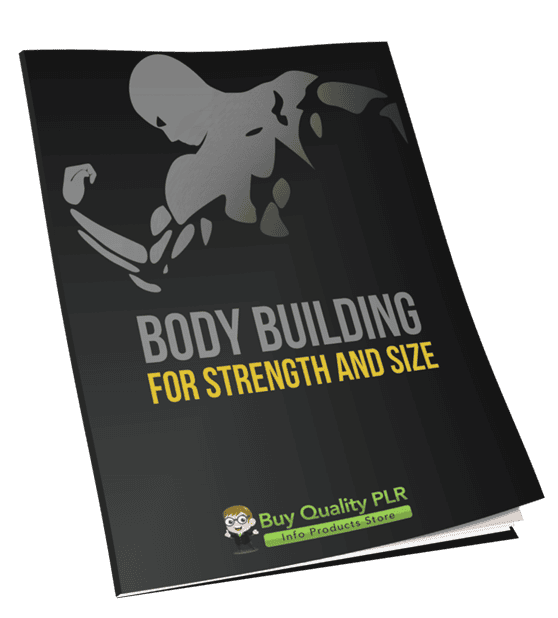
Easy Weight Loss PLR Course 30k Words
in Health PLR , PLR Checklists , PLR eBooks , PLR eCourses , PLR List Building Reports , Premium PLR , Premium PLR eBooks , Premium PLR Reports , Premium White Label Brandable PLR Coaching Courses , Private Label Rights Products , Weight Loss PLR , Weight Loss PLR EbooksChoose Your Desired Option(s)
has been added to your cart!
have been added to your cart!
#easyweightloss #weightlosscourse #plrcontent #healthandwellness #weightmanagement #fitnesstips #healthyliving #plrcourse #weightlosstips #healthyhabits
Easy Weight Loss PLR Course: A Simple Guide to Achieving Your Weight Loss Goals
Are you ready to transform your body and mind with a simple and sustainable approach to weight loss? The Easy Weight Loss PLR Course is designed to provide you with practical, easy-to-follow steps that guide you toward a healthier, more balanced lifestyle. Whether you’re new to weight loss or looking to refine your approach, this comprehensive course is packed with useful insights, actionable advice, and strategies to help you lose weight and keep it off.
With this course, you’ll learn how to make gradual, achievable changes to your routine and mindset that can result in lasting results. It’s not about restrictive diets or extreme workouts—it’s about making small, manageable shifts that you can stick with over time.
Presenting…
Easy Weight Loss PLR Course 30k Words
Course Overview: Easy Weight Loss
The Easy Weight Loss course provides you with a clear roadmap for achieving your weight loss goals in a sustainable and enjoyable way. Designed to help individuals of all fitness levels, this course is broken down into five actionable modules. Each module builds on the last, guiding you through the process of creating lasting habits that support a healthy weight and lifestyle.
Course Outline:
Module 1: Laying the Foundation for Weight Loss
In this module, you’ll lay the groundwork for a successful weight loss journey by understanding your goals and tracking your progress.
- Step 1: Understand Your Why
Identify your personal motivation for weight loss, whether it’s for health, energy, or confidence. This clarity will keep you focused on your goals. - Step 2: Set Realistic Goals
Set small, achievable goals that can lead to long-term success. Aim for a sustainable weight loss of 1-2 pounds per week to maintain health and motivation. - Step 3: Track Your Progress
Learn the benefits of tracking what you eat, your workouts, and how you feel. Use apps or journals to keep yourself accountable. - Step 4: Build a Support System
Surround yourself with supportive people, whether through friends, family, or online communities. Support is key to staying motivated.
Module 2: Nutrition – Fueling Your Body Right
Good nutrition is the cornerstone of weight loss. This module covers meal planning, portion control, and choosing the right foods to fuel your body.
- Step 1: Know What You’re Eating
Learn the importance of portion control and focus on nutrient-dense foods like lean proteins, vegetables, and whole grains. - Step 2: Plan Your Meals
Master meal planning to avoid unhealthy choices and ensure you have healthy meals ready at all times. - Step 3: Eat Balanced Meals
Learn how to create meals with a balance of protein, fiber, and healthy fats to keep you satisfied longer and prevent overeating. - Step 4: Stay Hydrated
Drinking plenty of water helps manage hunger and supports metabolism. Learn how staying hydrated can improve your weight loss efforts.
Module 3: Exercise – Getting Moving
Exercise plays an important role in weight loss. This module introduces simple and effective activities that fit into your daily routine.
- Step 1: Start with Easy, Low-Impact Activities
Begin with simple exercises like walking or cycling to build stamina and increase your activity level. - Step 2: Incorporate Strength Training
Strength exercises like squats, lunges, and push-ups help build muscle, which increases calorie burn even at rest. - Step 3: Include Cardio for Fat Burning
Engage in at least 150 minutes of moderate cardio each week, including activities like jogging, dancing, or swimming. - Step 4: Be Consistent
Consistency is key. Incorporate regular physical activity into your daily routine to see lasting results.
Module 4: Mindset – Staying Focused and Positive
Your mindset is crucial to achieving weight loss. This module helps you build a positive attitude, stay patient, and avoid negative thoughts.
- Step 1: Cultivate Patience
Weight loss takes time. Learn how to celebrate small wins and keep moving forward, trusting the process. - Step 2: Avoid Negative Self-Talk
Replace criticism with positive affirmations and focus on the progress you’ve made, not perfection. - Step 3: Practice Mindful Eating
Slow down and savor your meals to avoid overeating. Mindful eating helps you enjoy food more and develop a healthier relationship with food. - Step 4: Handle Setbacks Gracefully
Everyone faces challenges. Learn how to bounce back from setbacks without guilt or frustration.
Module 5: Creating Long-Term Habits for Sustained Weight Loss
Long-term weight loss requires sustainable habits. This module helps you build habits that you can maintain for the rest of your life.
- Step 1: Make Healthy Choices a Lifestyle
Embrace weight loss as a lifestyle change rather than a temporary diet. Incorporate healthy habits into your daily routine, such as choosing whole foods and walking after meals. - Step 2: Stay Active Daily
Find ways to stay active outside of workouts, such as taking the stairs, walking while on the phone, or stretching during TV time. - Step 3: Enjoy Your Food
Learn to indulge mindfully and in moderation. Weight loss doesn’t mean depriving yourself—it’s about balance. - Step 4: Keep Learning and Evolving
Weight loss is an ongoing journey. Continue learning about nutrition, exercise, and self-care to improve your health long-term.
Bonus Materials
To enhance your learning experience and make it even easier to implement the course, we also provide:
- Easy Weight Loss Checklist (355 words): A quick reference to help you stay on track with your weight loss goals.
- Easy Weight Loss FAQs (1,080 words): Answers to common questions about weight loss and tips to overcome obstacles.
- Easy Weight Loss Salespage (855 words): A professionally written sales page for marketing this course effectively.
How to Use and Profit from This Course
The Easy Weight Loss PLR Course offers a wide range of ways for you to profit. Here are just a few ideas:
- Sell the Course as-is
Offer the course directly on your website for $47-$97 depending on your niche. - Break It Into Smaller Reports
Turn the content into bite-sized reports and sell each one for $10-$20. - Bundle with Other Health Products
Combine this course with other health-related products and sell the bundle for $97-$197. - Create a Membership Site
Offer the course as part of a membership site where customers pay a monthly fee for ongoing access to content, coaching, or support. - Convert to Audio/Video
Turn the course into an audio or video series and sell it for a premium price of $297-$497. - Use for Lead Magnets
Excerpt and/or edit portions of the course to create lead magnets like blog posts, free reports, or email courses.
What You Can Do with This Course:
Permissions:
- Sell the course as-is or with minor tweaks.
- Break the content into smaller portions and sell them for $10-$20 each.
- Bundle with related health content and sell it for $47-$97.
- Create a membership site with access to the course and charge monthly fees.
- Convert the course into audio, video, or membership site content for a premium.
- Use the content for lead magnets to build your email list.
Restrictions:
- You cannot pass on PLR rights to your customers.
- No 100% affiliate commissions.
- The full course cannot be given away in its current state—it must be sold, or excerpted/edited for giveaways.
Ready to Start Your Weight Loss Journey?
Don’t wait any longer to start living your healthiest life. The Easy Weight Loss PLR Course provides everything you need to succeed—step-by-step guidance, expert tips, and motivational strategies to help you achieve lasting weight loss results.
Start today and transform your life, one small change at a time. Take action now and embrace a healthier, happier you!
has been added to your cart!
have been added to your cart!
Here A Sample of Easy Weight Loss PLR Course
Welcome to the “Easy Weight Loss” course! This course is designed to guide you step-by-step through simple, effective strategies that can help you lose weight in a sustainable and healthy way. We’ll break down the process into easy-to-follow modules, so you can gradually implement these habits into your daily routine and see the results over time.
Module 1: Laying the Foundation for Weight Loss
Step 1: Understand Your Why
Overview:
The first and most important step in your weight loss journey is understanding your “Why.” This is the personal motivation that will drive you throughout the process. Without a strong, clear “Why,” it’s easy to lose focus when challenges arise. Whether you’re motivated by the desire for better health, more energy, improved self-confidence, or something else, having a deep understanding of your purpose behind the weight loss journey will ensure that you stay motivated and committed.
1.1: Reflect on Your Motivations
Before embarking on any journey, it’s essential to take a moment to reflect on why you want to lose weight in the first place. Your motivation could stem from a variety of reasons. For instance:
- Better Health: Many people want to lose weight to lower the risk of developing chronic health conditions such as heart disease, diabetes, or high blood pressure. A healthier weight can improve overall physical well-being, reduce inflammation, and boost immune function.
- More Energy: Carrying excess weight can drain your energy levels, making it difficult to stay active or keep up with daily tasks. Losing weight can help restore your vitality and allow you to feel more energetic throughout the day.
- Feeling More Confident: Weight loss often contributes to a stronger sense of self-esteem and confidence. This can be especially important in social situations, at work, or in personal relationships. Feeling good about your appearance can improve your overall mental health.
- Physical Limitations: Excess weight can limit physical activity and restrict movement. If you’re looking to regain the ability to do things you once enjoyed—like playing sports, hiking, or simply moving freely—losing weight can help you reclaim that physical freedom.
- Mental Clarity and Emotional Well-Being: Weight loss is not just about the body; it’s also about the mind. Losing weight can sometimes improve your mood, reduce stress, and lead to better mental clarity and emotional health.
Take some time to write down or mentally reflect on your motivations. Why is losing weight important to you right now? What would achieving your weight loss goal allow you to experience that you aren’t experiencing right now?
1.2: Identify Your Deepest Emotional Drivers
Your “Why” often goes beyond the surface level. For example, you might say, “I want to lose weight to look good in my clothes,” but that might be masking a deeper emotional reason, such as:
- Wanting to feel more attractive or desirable to others
- Seeking acceptance or validation from a specific group or society
- Reclaiming your personal power and confidence after a challenging period in your life
By digging deeper into your motivations, you can connect with your true emotional drivers, which will help fuel your commitment when times get tough. This process might require some introspection, and it’s important to be honest with yourself.
Take some time to journal about your deeper emotional drivers for weight loss. Ask yourself questions like:
- What would losing weight mean for my self-esteem or confidence?
- How would losing weight improve my relationships with others?
- What do I imagine life would be like if I reached my goal weight?
1.3: Set Meaningful, Personalized Goals
Once you’ve identified your motivation, it’s essential to translate that into concrete goals. These goals should be meaningful to you and align with the personal reasons you’ve identified for wanting to lose weight.
Instead of vague goals like “I want to lose weight,” set specific, achievable, and measurable targets. For example:
- “I want to lose 10 kilograms in 3 months so I can fit comfortably into my clothes again.”
- “I want to improve my fitness level to keep up with my children during outdoor activities.”
- “I want to lose weight to reduce the risk of diabetes, as it runs in my family.”
By setting clear, personalized goals, you give your weight loss journey purpose. This will keep you motivated and help you stay focused even when obstacles arise.
Remember that your goals should be:
- Specific: Make sure your goal is clear and defined (e.g., losing a certain amount of weight, improving fitness).
- Measurable: Track your progress to keep yourself accountable (e.g., measuring your weight loss every week or tracking workouts).
- Achievable: Set goals that are realistic within your timeframe and current abilities.
- Relevant: Ensure that your goals align with your motivations, whether it’s for health, confidence, or energy.
- Time-bound: Set a timeline for achieving your goal to keep yourself on track (e.g., six months or a year).
1.4: Visualize the Outcome
Visualization is a powerful tool that can help keep you motivated throughout your journey. Imagine what it would feel like to reach your goal and how your life will change as a result. Try to picture yourself healthier, more energetic, or more confident.
Ask yourself the following questions:
- What will your life look like after losing weight?
Will you feel more confident when you look in the mirror? Will you be able to participate in activities you couldn’t do before? - How will your relationships be affected?
Will you feel more engaged and active in social situations? Will you be able to enjoy a more active lifestyle with family or friends? - What will you be able to do physically that you couldn’t do before?
Whether it’s fitting into your favorite outfit or taking part in a sport or activity, visualize yourself enjoying these moments.
Write down your vision and refer to it regularly to remind yourself why you’re taking this journey. This can be especially helpful during moments of doubt or frustration.
1.5: Stay Flexible and Open to Adjustments
As you embark on your weight loss journey, it’s important to remain flexible and open to adjustments. Sometimes life throws curveballs, and your motivation or goals might shift along the way. This is perfectly normal and part of the process.
Your initial “Why” might evolve as you progress. For example, as you begin to lose weight and feel better, your motivation may shift from simply losing weight to maintaining a healthy, active lifestyle for the long term.
Periodically check in with yourself to ensure that your “Why” still aligns with your current goals. If needed, reassess your motivations and adjust your goals accordingly. The key is to stay committed to your personal growth and well-being, and to remember that your journey is unique to you.
Conclusion:
Understanding your “Why” is not just the first step in your weight loss journey—it’s the foundation for your long-term success. By deeply reflecting on your motivations, setting meaningful goals, visualizing your success, and staying flexible, you’ll have the mental clarity and emotional strength needed to push through challenges and stay on track. This will ensure that your journey is not just about losing weight, but about achieving a healthier, happier, and more fulfilling life.
Step 2: Set Realistic Goals
Overview:
The second crucial step in your weight loss journey is setting realistic goals. While it’s easy to get motivated by dramatic weight loss stories or unrealistic transformations, aiming for drastic changes can lead to burnout and disappointment. Instead, it’s far more effective to focus on setting small, achievable goals that keep you motivated and moving forward consistently. By breaking down your larger weight loss ambitions into manageable steps, you’ll stay on track and make sustainable progress.
2.1: Start with the Big Picture – Understand Your Ultimate Goal
Before you dive into setting smaller, specific goals, it’s important to clarify your ultimate weight loss goal. This gives you a clear direction and helps you create a roadmap for your journey. Your big picture goal is your end destination, but it’s the smaller, realistic goals that will get you there.
Ask yourself these questions to define your ultimate goal:
- How much weight do I want to lose?
Is your goal to lose 10 kilograms, 20 pounds, or another specific amount? Be clear about what you hope to achieve and ensure it’s in line with your health goals and medical recommendations. - What is the time frame for achieving this goal?
Are you looking to lose weight in a certain time frame? For example, you might set a goal to lose 10 kilograms in six months. Make sure the time frame is reasonable and aligns with your lifestyle and any other commitments. - What are the other benefits I hope to achieve?
Besides losing weight, think about the other goals that matter to you. Perhaps you want to gain more energy, improve your fitness, reduce stress, or feel more confident. These secondary goals are just as important and should also be included in your overall plan.
2.2: Break It Down into Smaller, Achievable Goals
Now that you have your big picture in mind, the next step is to break it down into smaller, achievable goals. Smaller goals create focus and give you something tangible to work toward every day. These are your building blocks, and as you achieve them, you’ll feel a sense of accomplishment that propels you forward.
For example:
- Goal 1: “I will lose 1-2 pounds per week for the next 12 weeks.”
- Why this works: This is a realistic goal that can be maintained without causing drastic changes to your lifestyle. Losing 1-2 pounds a week is considered healthy and sustainable, which will help prevent feelings of frustration or burnout.
- Goal 2: “I will exercise at least 3 times per week for 30 minutes each session.”
- Why this works: Starting with manageable exercise sessions ensures you don’t overwhelm yourself, especially if you’re new to working out. As you build consistency, you can gradually increase the duration or frequency.
- Goal 3: “I will eat a serving of vegetables with every lunch and dinner for the next month.”
- Why this works: This small dietary change can significantly improve your nutrition without feeling restrictive. It’s a simple goal that helps you make progress toward better eating habits without drastic overhauls.
2.3: Make Your Goals SMART
To set truly effective goals, follow the SMART framework: Specific, Measurable, Achievable, Relevant, and Time-bound. This framework ensures that your goals are well-defined and within reach.
Here’s how to apply each element of the SMART framework:
- Specific: Your goal should be clear and focused. Instead of saying, “I want to lose weight,” say, “I want to lose 10 kilograms in 3 months.” This makes the goal tangible and gives you something concrete to aim for.
- Measurable: Ensure that you can track your progress. For example, tracking your weight, body measurements, or fitness levels allows you to measure your success. This also keeps you motivated as you see tangible progress.
- Achievable: Your goal should be realistic based on your current lifestyle and abilities. Setting an unrealistic target, like aiming to lose 10 kilograms in one month, may lead to frustration or unhealthy habits. Losing 1-2 pounds per week is a more sustainable rate of progress.
- Relevant: Your goal should be meaningful to you. If your primary reason for weight loss is to feel more confident, then setting a goal around fitting into a certain outfit, or taking part in a special event, might be more relevant to your journey than focusing solely on numbers.
- Time-bound: Set a deadline for achieving your goal. This keeps you focused and helps you prioritize your efforts. For instance, “I will lose 5 kilograms in 6 weeks” gives you a clear time frame and prevents procrastination.
2.4: Prioritize Your Goals for Sustainable Progress
When setting multiple goals, it’s essential to prioritize them. Focus on the goals that will have the most impact on your overall journey. Prioritizing allows you to dedicate energy to what matters most without feeling overwhelmed.
Consider the following example:
- First priority: Focus on improving your eating habits. If you haven’t been eating balanced meals, prioritizing healthy food choices will likely lead to the greatest immediate impact on your weight loss.
- Second priority: Once your eating habits are in place, focus on building a consistent exercise routine. This will enhance your metabolism and increase calorie burning.
- Third priority: Once you’ve established good habits in nutrition and exercise, you can focus on fine-tuning other aspects, such as getting better sleep or managing stress levels. These factors can significantly impact your weight loss but are more effective once you’ve solidified your foundational habits.
By starting with a few core, high-priority goals, you prevent yourself from spreading your energy too thin and ensure steady progress.
2.5: Adjust and Reevaluate Goals as Needed
Setting goals isn’t a one-time event. As you progress on your weight loss journey, it’s important to evaluate how well you’re meeting your goals and adjust them if necessary. Life is full of unexpected challenges, and it’s normal for your goals to evolve along the way.
Here are some signs that you may need to adjust your goals:
- You’re consistently hitting your targets.
If you’ve consistently met your goals, it’s a sign you might be able to challenge yourself with slightly more ambitious targets. For example, if you’ve been losing 1-2 pounds per week with ease, you might increase your weekly target slightly or set a new fitness-related goal. - You’re feeling overwhelmed or discouraged.
If you’re finding it difficult to meet your goals, it may be time to reassess. You could break your goals into even smaller, more manageable pieces, or give yourself some extra time to reach them. Adjusting goals to match your current capabilities can help you stay on track without feeling stressed. - Life circumstances have changed.
Perhaps you’re dealing with a new job, health issues, or family obligations that make it harder to achieve your original goals. In these situations, it’s important to be flexible. Adjust your goals and timelines to ensure they’re still realistic based on your new circumstances.
2.6: Celebrate Small Wins Along the Way
Every time you achieve a small goal, take a moment to celebrate! Whether it’s successfully losing your first 5 kilograms, sticking to your exercise routine for a month, or cooking a healthy meal from scratch, these small wins are important milestones. Celebrate your progress in a way that feels rewarding to you. This will help reinforce your motivation and keep you on track toward your ultimate goal.
Conclusion:
Setting realistic goals is a powerful strategy to ensure long-term success in your weight loss journey. By focusing on achievable, measurable targets and breaking down your larger objectives into smaller steps, you’ll stay motivated and maintain consistent progress. Remember, the key is to be patient and flexible—allowing for adjustments when needed while celebrating the small wins along the way. By keeping your goals realistic and aligned with your motivations, you’ll build a sustainable path toward achieving the healthy lifestyle you desire.
Step 3: Track Your Progress
Overview:
Tracking your progress is a vital step in any weight loss journey. It’s not just about tracking numbers on a scale or counting calories; it’s about understanding how your body is responding to your efforts and staying accountable to your goals. By keeping a journal or using an app, you can create a comprehensive picture of your daily habits, which will help you make adjustments when needed, stay motivated, and see the positive changes that might otherwise go unnoticed. Whether you choose a traditional pen-and-paper approach or opt for digital tracking tools, the important thing is consistency.
3.1: Choose the Right Tracking Method for You
The first step in tracking your progress is to decide on the method that best fits your lifestyle and preferences. Different people prefer different methods of tracking, so it’s important to choose one that you will use consistently and comfortably.
Here are a few popular options:
- Food and Exercise Journal:
A simple pen-and-paper journal can be a very effective method of tracking. You can write down everything you eat and drink, as well as your exercise routine, mood, and energy levels. The key here is to be honest and consistent with your entries. You could also track other factors like sleep quality and stress levels. The visual aspect of writing down your progress can make you more mindful of your choices. - Mobile Apps:
If you prefer a more digital approach, numerous apps can help you track your food intake, exercise, and even sleep patterns. Apps like MyFitnessPal, Lose It!, or Fitbit allow you to log your meals and workouts, while also providing useful insights into your overall health. These apps typically come with built-in tools that automatically calculate calories, macronutrients, and progress over time. Choose an app that has the features you need and one that you will enjoy using. - Fitness Wearables and Devices:
For those who prefer a high-tech solution, wearables like Fitbit, Apple Watch, or Garmin can track your exercise, heart rate, sleep, and daily activity levels. These devices often sync with mobile apps, giving you a comprehensive view of your progress. - Combination Approach:
Some people prefer a combination of methods—using a journal for food and mood tracking, and an app or wearable for exercise and physical activity tracking. This approach can give you the best of both worlds and can be very effective in providing a more holistic view of your progress.
3.2: Log Everything You Eat and Drink
One of the most important elements of tracking is keeping a detailed log of what you eat and drink. By writing down every meal, snack, and beverage you consume, you create a clear record of your habits. This helps you identify patterns and make adjustments where necessary.
Here’s how you can effectively track your food intake:
- Record the Time and Portion Size:
Write down the time of day you eat each meal or snack and be sure to include portion sizes. If you’re using an app, you can often scan barcodes or search for specific foods to log them. Make note of whether you are eating out or cooking at home, as portion sizes may vary. This level of detail helps to make your tracking more accurate. - Track Nutritional Information:
While you don’t need to obsess over every calorie, tracking macronutrients like protein, carbohydrates, and fats can help you ensure that your meals align with your weight loss goals. Many apps will break down the nutritional information for you, and this can help you spot areas for improvement in your diet. - Be Honest:
The key to successful tracking is honesty. Don’t skip meals or snacks—track everything you eat, even if you think it’s “just a small bite.” Over time, this will help you identify areas where you might be consuming hidden calories, like snacking out of boredom or emotional eating.
3.3: Track Your Exercise Routine
Tracking your physical activity is just as important as tracking your food intake. Regular exercise is a crucial part of weight loss, and tracking helps you stay consistent and motivated to move your body every day.
Here’s how you can track your exercise routine:
- Note the Type of Exercise:
Write down what kind of exercise you’re doing—whether it’s cardio, strength training, yoga, or something else. This helps you monitor the variety of activities you’re incorporating into your routine and ensures you’re balancing different types of exercise for optimal results. - Track the Duration and Intensity:
Record how long you exercise for, and if possible, note the intensity of the workout. For example, “30-minute walk at moderate intensity,” or “45-minute strength training session.” Tracking the intensity will help you gauge whether you’re pushing yourself enough to challenge your body, which is important for progression. - Monitor Rest Days:
Rest days are just as important as workout days. Tracking your rest days helps you ensure that you’re giving your body time to recover and prevents overtraining. Include how you feel on these rest days—are you feeling sore, fatigued, or energized? This information will help you understand your recovery needs. - Celebrate Achievements:
Tracking allows you to celebrate milestones, such as completing your first 5K, increasing your weights in strength training, or simply sticking to your routine for a full month. Celebrate the small wins along the way—it will keep you motivated.
3.4: Track Your Emotional and Physical Well-being
While the focus of tracking often revolves around food and exercise, it’s equally important to monitor your emotional and physical well-being. Your mood, energy levels, and stress can significantly affect your weight loss progress. By tracking these factors, you can adjust your routine to improve your overall health.
Here’s how to track your well-being:
- Track Your Mood:
Keep track of how you’re feeling emotionally each day. Are you stressed, happy, anxious, or motivated? Emotional well-being is directly linked to weight loss, and being able to identify patterns between your mood and your eating habits can be very helpful. For example, do you tend to overeat when you’re stressed? Recognizing this can help you develop coping strategies. - Monitor Your Energy Levels:
Pay attention to how energized or fatigued you feel throughout the day. Tracking your energy can help you determine if your food and exercise routine is working for you. Are you feeling sluggish after meals? Or are you energized throughout the day? This data will help you optimize your eating and exercise plan to better support your body’s needs. - Record Sleep Patterns:
Quality sleep plays an essential role in weight loss, so it’s important to track how well you’re sleeping each night. Write down the number of hours you sleep, the quality of your sleep, and how you feel when you wake up. Sleep tracking can help you recognize if lack of sleep is affecting your energy or cravings. - Track Other Health Indicators:
You may also want to track other health indicators, such as your water intake, digestion, and stress levels. All of these factors can have a significant impact on weight loss and overall well-being.
3.5: Review and Reflect Regularly
Tracking is not a passive activity. To truly benefit from it, you must regularly review your data, reflect on your progress, and adjust your goals as needed.
Here’s how to stay on top of your progress:
- Weekly Check-ins:
At the end of each week, take time to review your tracking logs. Look at your food choices, exercise routines, mood, and energy levels. Ask yourself, “What went well this week? What could I improve?” This will help you make informed decisions about where to focus your efforts in the coming week. - Look for Patterns:
As you track your progress over time, you’ll start to see patterns emerge. Perhaps you notice that you tend to eat more sugar when you’re stressed or that you feel more energetic when you drink enough water. Identifying these patterns allows you to make small adjustments to improve your results. - Celebrate Achievements:
Don’t just focus on areas that need improvement. Celebrate the positive changes you see. Whether it’s fitting into clothes that once felt tight, feeling stronger during workouts, or seeing a consistent decrease in weight, acknowledging your achievements will motivate you to keep going. - Adjust Goals if Needed:
Tracking helps you spot when you need to adjust your goals. If you find that your current goals are too easy, consider setting more challenging targets. If you’re struggling, it may be time to break your goals down further or reassess your approach.
Conclusion:
Tracking your progress is a key component in successfully reaching your weight loss goals. It keeps you accountable, provides insights into your habits, and helps you stay on course. By choosing the right tracking method, logging your food and exercise, monitoring your emotional well-being, and regularly reviewing your progress, you’ll be able to make informed decisions and adjustments along the way. Remember, consistency is key—tracking helps you see how far you’ve come and gives you the motivation to keep going.
Step 4: Build a Support System
Overview:
Building a strong support system is one of the most essential steps in any weight loss journey. A network of family, friends, or like-minded individuals who share similar goals can provide the motivation, encouragement, and accountability necessary for long-term success. Whether it’s emotional support when you’re feeling discouraged, or practical advice on how to overcome obstacles, a well-rounded support system can be the difference between giving up and pushing through challenges. In this step, we will explore how to build and nurture a support system that helps you stay motivated and on track toward your weight loss goals.
4.1: Share Your Goals with Family and Friends
The first step in building a support system is to make your weight loss goals known to the people close to you. It might feel vulnerable to share personal goals, especially one as challenging as losing weight, but telling others about your intentions can provide a source of motivation and accountability.
Here’s how to approach this step:
- Be Honest About Your Goals:
When sharing your goals with family or friends, be open about why you want to lose weight and what you hope to achieve. Whether it’s for health reasons, boosting your confidence, or increasing energy levels, sharing the “why” behind your goals can help others understand your motivations and offer more meaningful support. - Set Clear Expectations:
Let your family and friends know what kind of support you need from them. Do you want them to cheer you on when you make progress, or do you prefer practical help like meal prepping together or going on walks? Be clear about how they can help you stay motivated and on track. - Encourage Open Communication:
Be receptive to feedback and encouragement. Let them know that you are open to advice, but also explain your boundaries if needed. For example, if you don’t want unsolicited comments about your eating habits or exercise routine, it’s important to communicate this with kindness and respect. - Establish Accountability:
Letting your close ones know your goals also opens the door for them to check in on your progress. This accountability can be very motivating. Having someone ask you about your weekly progress, or even share your wins, can keep you on track and reinforce your commitment.
4.2: Join a Weight Loss or Fitness Group
If you’re looking for more than just support from family and friends, joining a group of people who share similar goals can create an even stronger foundation for success. Weight loss or fitness groups, whether in-person or online, provide a platform for people to connect, share experiences, ask questions, and offer encouragement.
Here’s how to get started:
- Online Communities:
Many online platforms, like Facebook, Reddit, and specialized weight loss forums, have dedicated groups for weight loss and fitness enthusiasts. These communities often provide a wealth of shared experiences, tips, and motivational content. Look for a group that aligns with your values, such as one that focuses on healthy, sustainable weight loss rather than quick fixes or extreme dieting. - Local Support Groups:
If you prefer in-person interaction, check out local support groups for weight loss, fitness, or health improvement. Many cities offer weight loss meet-ups, fitness classes, or wellness workshops where you can meet people face-to-face and share your experiences. Being part of a local community can create deeper, more personal connections. - Fitness Classes or Workout Buddies:
Consider joining a fitness class, boot camp, or a walking/running group. The camaraderie in these groups can motivate you to stick with your fitness routine. Additionally, workout buddies can help you stay consistent and even add an element of fun to your workouts. Having someone to train with can make you less likely to skip your sessions, especially when you know someone is counting on you. - Specialized Support Networks:
There are also specific support groups for particular weight loss goals or health conditions (such as diabetes management or overcoming emotional eating). These specialized networks can provide tailored advice and connect you with people who truly understand your unique challenges.
4.3: Be Part of the Conversation—Exchange Tips and Experiences
When you’re part of a supportive community, it’s important to contribute to the conversation by sharing your experiences and exchanging tips. Support systems are not just about receiving help—they are about mutual support and learning from others.
Here’s how to engage with your support system:
- Share Your Wins and Struggles:
Be open about your challenges as well as your successes. If you hit a milestone—whether it’s losing a certain number of pounds, increasing your fitness level, or sticking to a new habit for a set period—share it with your support system. Celebrating wins together fosters a positive environment and keeps everyone motivated. Similarly, talking about struggles helps to normalize the journey and ensures that you’re not alone in facing obstacles. - Ask for Advice When Needed:
One of the main benefits of being part of a group or having a network of supportive individuals is the opportunity to ask for advice. If you’re feeling stuck, confused, or demotivated, ask the group for their tips. Many people will have faced similar challenges and can provide valuable insights or simple solutions that you may not have considered. - Provide Support to Others:
Don’t underestimate the power of offering support to others. When you provide encouragement to others who are working towards similar goals, you reinforce your own commitment to your journey. The act of helping others can create a sense of fulfillment and motivation, and it strengthens the community as a whole. - Share Healthy Recipes and Ideas:
Whether you’re part of an online group or a fitness class, sharing healthy recipes, meal prep tips, or new workout ideas can foster a sense of camaraderie. You might discover new meals or activities that can help refresh your weight loss plan, while also contributing to the success of others.
4.4: Build Emotional and Moral Support
A strong support system goes beyond just practical advice and encouragement—it also involves emotional and moral support. The journey to weight loss can have ups and downs, and having people who understand and support you emotionally is crucial to maintaining a positive mindset.
Here’s how to build emotional and moral support:
- Identify Your Core Supporters:
Identify the people in your life who offer the most emotional support and reassurance. These are the individuals who can help you stay grounded during challenging times and remind you of why you started your weight loss journey in the first place. It could be a close friend, family member, or a mentor. Having these people in your corner can help you weather any setbacks. - Celebrate Emotional Wins:
Emotional wins are just as important as physical wins. Perhaps you successfully resisted a tempting snack or felt empowered after completing a tough workout. These small emotional victories help build resilience and can often be the catalyst for bigger physical wins. Share these moments with your support system so they can cheer you on. - Develop a Safe Space for Vulnerability:
Weight loss is not just a physical challenge—it’s also an emotional one. Having a support system where you can safely express your doubts, frustrations, and emotions without fear of judgment is essential. Creating this safe space allows you to process emotions and stay focused on the bigger picture, without feeling discouraged or isolated. - Maintain Consistent Communication:
Regularly check in with your support system. Whether it’s a quick message, a phone call, or an in-person meeting, maintaining communication ensures that you stay connected and reminded of your commitment to your goals. Consistent communication helps strengthen your relationships and builds trust within your support network.
4.5: Stay Positive and Offer Encouragement
A key part of having a successful support system is ensuring that it remains a positive, motivating force in your life. A toxic or overly critical environment can drain your motivation, so it’s essential to surround yourself with people who encourage growth, positivity, and self-compassion.
Here’s how to maintain a positive atmosphere within your support system:
- Practice Positive Reinforcement:
In every conversation, focus on positive reinforcement. Recognize and celebrate the small wins—whether it’s making healthy food choices or staying consistent with workouts. This positive reinforcement helps maintain a focus on progress, not perfection. - Encourage Others to Keep Going:
If you notice someone in your support system struggling or feeling discouraged, offer words of encouragement. Sometimes, all it takes is a reminder of how far they’ve come or an empathetic ear. Positive encouragement in times of difficulty can make all the difference. - Create an Uplifting Environment:
Whether it’s an online community, a fitness class, or family gatherings, make sure the environment around you is uplifting. Share success stories, motivational quotes, or inspiring podcasts with your group to keep morale high. A positive atmosphere will help everyone in the group feel motivated to stay the course.
Conclusion:
Building a strong support system is crucial for weight loss success. By involving family and friends, joining groups with similar goals, sharing experiences, and offering mutual support, you create a network that helps you stay focused and motivated. Remember that your support system is there to uplift you during challenging times and celebrate your victories. By fostering a positive, encouraging environment, you’ll be better equipped to overcome obstacles, stay on track, and ultimately achieve your weight loss goals.
We’re also giving these extra bonuses
Easy Weight Loss – Checklist

Easy Weight Loss – FAQs

Easy Weight Loss – Salespage Content

Package Details:
Word Count: 28 473 Words
Number of Pages: 99
Easy Weight Loss – Bonus Content
Checklist
Word Count: 355 words
FAQs
Word Count: 1180 words
Salespage Content
Word Count: 855 words
Total Word Count: 30 763 Words
Your PLR License Terms
PERMISSIONS: What Can You Do With These Materials?
Sell the content basically as it is (with some minor tweaks to make it “yours”).
If you are going to claim copyright to anything created with this content, then you must substantially change at 75% of the content to distinguish yourself from other licensees.
Break up the content into small portions to sell as individual reports for $10-$20 each.
Bundle the content with other existing content to create larger products for $47-$97 each.
Setup your own membership site with the content and generate monthly residual payments!
Take the content and convert it into a multiple-week “eclass” that you charge $297-$497 to access!
Use the content to create a “physical” product that you sell for premium prices!
Convert it to audios, videos, membership site content and more.
Excerpt and / or edit portions of the content to give away for free as blog posts, reports, etc. to use as lead magnets, incentives and more!
Create your own original product from it, set it up at a site and “flip” the site for megabucks!
RESTRICTIONS: What Can’t You Do With These Materials?
To protect the value of these products, you may not pass on the rights to your customers. This means that your customers may not have PLR rights or reprint / resell rights passed on to them.
You may not pass on any kind of licensing (PLR, reprint / resell, etc.) to ANY offer created from ANY PORTION OF this content that would allow additional people to sell or give away any portion of the content contained in this package.
You may not offer 100% commission to affiliates selling your version / copy of this product. The maximum affiliate commission you may pay out for offers created that include parts of this content is 75%.
You are not permitted to give the complete materials away in their current state for free – they must be sold. They must be excerpted and / or edited to be given away, unless otherwise noted. Example: You ARE permitted to excerpt portions of content for blog posts, lead magnets, etc.
You may not add this content to any part of an existing customer order that would not require them to make an additional purchase. (IE You cannot add it to a package, membership site, etc. that customers have ALREADY paid for.)
Share Now!












